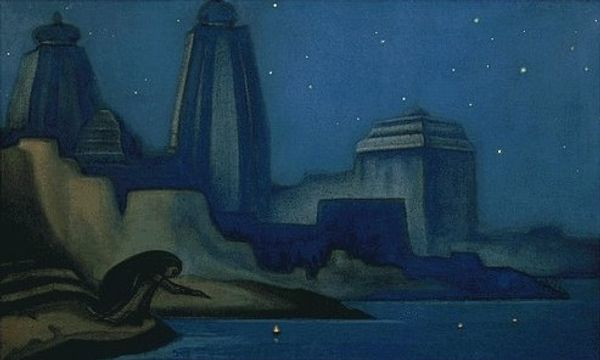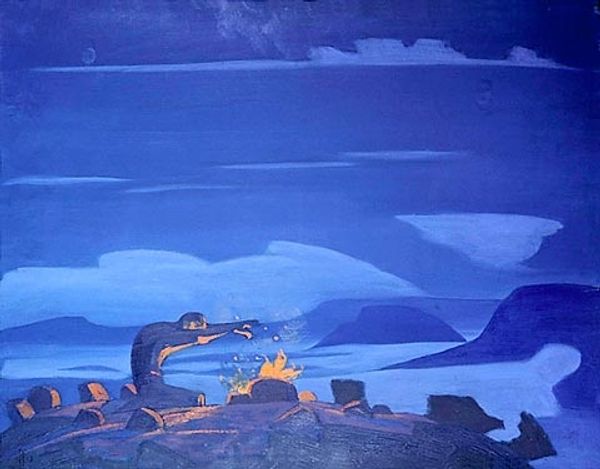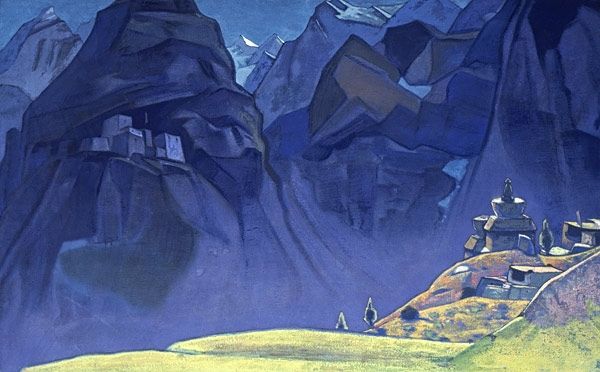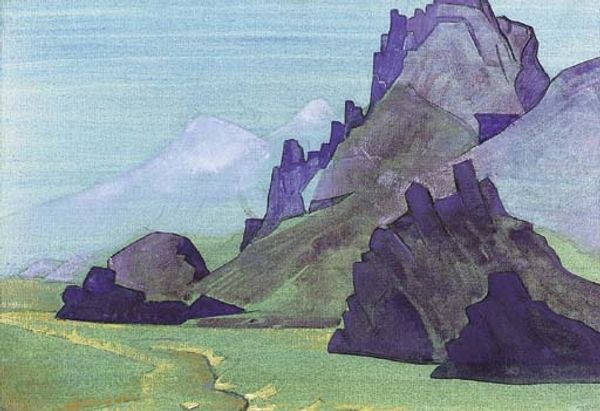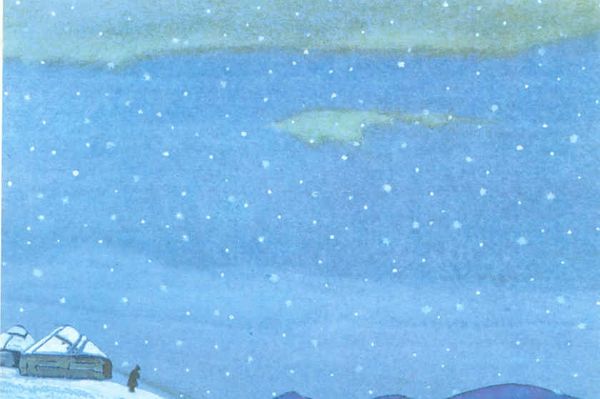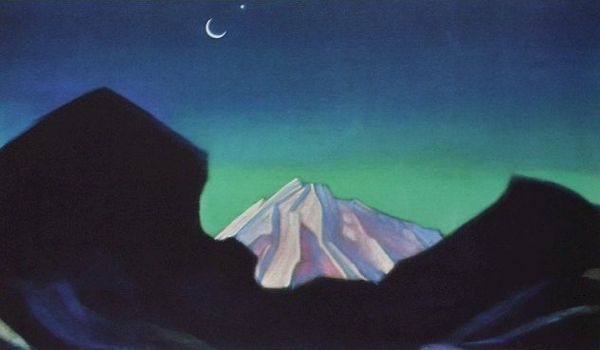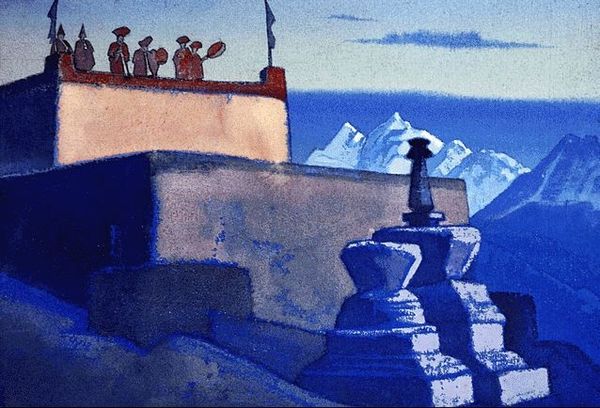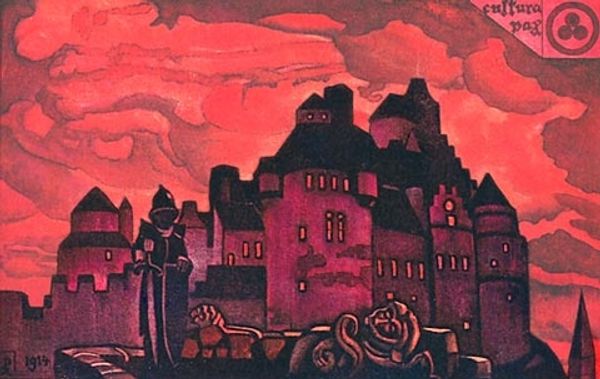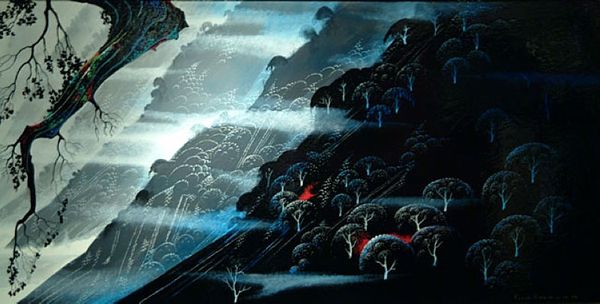
Lights on the Ganges. Flame of happyness. 1947
0:00
0:00
nicholasroerich
State Museum of Oriental Art, Moscow, Russia
Dimensions: 43.2 x 78.7 cm
Copyright: Public domain
Curator: Immediately, this painting feels… profound. The heavy use of blues gives it a nocturnal, dreamlike quality, doesn’t it? A sense of ancient mysteries unfolding. Editor: Indeed. We're looking at Nicholas Roerich’s "Lights on the Ganges. Flame of Happiness", created in 1947. It is a watercolor work that beautifully exemplifies his distinctive blend of Symbolism and Surrealism, currently residing at the State Museum of Oriental Art in Moscow. Curator: Roerich’s interest in the spiritual and theosophical is really palpable here. The Ganges River, of course, carries immense symbolic weight in Hinduism—it is perceived as the sacred purifier. You see this small, almost cloaked, figure holding a light? Perhaps representing a pilgrim or spiritual seeker? Editor: It's fascinating how Roerich frames his subjects. He painted extensively in the Himalayas and that experience obviously informed the artistic construction of his works. He uses a sort of stylized, almost architectural approach in his landscape. Note how the forms are solid and imposing like monumental structures rising from the riverbanks. What do you think that speaks to, regarding his socio-political context at that time? Curator: Given Roerich's deep engagement with Eastern philosophy, I think the monumental quality you note could be linked to ideas of enduring wisdom and spirituality that outlast human structures and empires. Even with the global unrest of the 1940s, it is speaking to ideas of permanence that lie in culture, history and thought. The Ganges, too, would represent an unwavering source of strength. Editor: It’s remarkable to think about the way cultural symbols take on different meanings based on social conditions. For someone unfamiliar with the spiritual background, might they read the visual cues as representative of strength, even if the figures seem isolated against this grand backdrop? The museum certainly provides important historical contexts, particularly around how such art functioned within the Soviet framework. Curator: Absolutely. That interaction – or even friction – between individual spiritual journey and state apparatus feels central to understanding Roerich's long term legacy, doesn’t it? He pushes at the edges. Editor: Precisely. An ongoing exploration of symbolism's public and private faces within 20th-century politics... an intriguing artistic question.
Comments
No comments
Be the first to comment and join the conversation on the ultimate creative platform.
